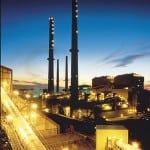An Environmental Protection Agency (EPA) plan to tighten emission limits for new and existing industrial boilers has sparked alarmed protests from the biomass generation industry and electric utilities, who say the proposed regulations are so onerous they threaten to shut down existing biomass power plants and already are chilling deployment of new facilities.
In comments on the rules submitted to EPA, Biomass Power Association President and Chief Executive Officer Robert Cleaves said EPA’s proposal is "uneconomic [and] unachievable," and will make it impossible to meet the Obama administration’s goal of rapidly expanding renewable energy production. Biomass generation constitutes roughly half of all U.S. renewable energy generation.
"In light of the overwhelming support for biomass from every corner of government, it is imperative that EPA adopt a rule that is protective of the public health and the environment while also allowing this critically important energy source to be fully utilized," Cleaves said. "We are concerned that the proposed rules will impose tens of billions of dollars in capital costs at thousands of facilities across the country."
At issue are proposed rules unveiled by EPA on April 29 to tighten limits on hazardous air pollutants (HAP) from industrial, commercial and institutional (ICI) boilers—a category that includes biomass facilities used to generate electricity. The rule is also particularly important to utilities that own or purchase biomass power or are contemplating building biomass plants to meet state renewable electricity standards.
The proposal would impose maximum achievable control technology (MACT) standards for major HAPs sources, defined as emitting 10 or more tons per year of any single air toxic or 25 tons per year or more of any combination of HAPs, on more than 10,000 existing fossil fuel–fired and biomass-fired boilers by the end of 2013 and on all new boilers built after the rule is finalized.
The proposal would replace a Bush administration rule vacated in 2007 by the U.S. Court of Appeals for the D.C. Circuit because that rule failed to distinguish industrial boilers from solid waste incinerators, which are regulated under separate sections of the Clean Air Act.
The April 29 proposal comprises three distinct proposed regulations: a new MACT standard for ICI boilers, a revised MACT standard for commercial and industrial solid waste incinerators, and a new definition of the term "solid waste." The new definition is aimed in part at ensuring that biomass facilities that burn both newly harvested wood and secondary materials—such as residues from pulp and paper mills—are not classified as solid waste incinerators.
The ICI boiler MACT standard would apply to 11 categories of boilers based on boiler configuration and the kinds of fuels used. It would address HAP emissions by imposing limits on five "surrogate" pollutants—mercury, hydrogen chloride, particulate matter, carbon monoxide and dioxins/furans.
For existing units, the MACT standards would be based on the average emission rate of the top 12% of the best performing boilers, based on data EPA has obtained from a number of boiler owners.
In a provision particularly infuriating to biomass power generators and utilities alike, EPA has proposed to establish the MACT standards on a pollutant-by-pollutant basis, meaning that the agency would determine the best-performing emissions rate for each of the five pollutants and require existing plants to meet that standard.
Industry critics of this approach said the agency effectively is requiring existing boilers to be reconfigured with controls to meet the best possible emission standards for each of the five HAPs—a requirement the industry, in uniform denunciation, said is impossible. Industry sources said, for example, that some boiler configurations used to sharply reduce nitrogen oxides tend to increase emissions of carbon monoxide.
The American Public Power Association colorfully described EPA’s proposal as "Franken-MACT," after the monster assembled from different body parts by Dr. Frankenstein in the classic Mary Shelley novel.
APPA and a host of electric utilities said EPA’s proposed pollutant-by-pollutant approach violates Clean Air Act section 112(d), which they said requires the agency to establish MACT by identifying the overall best performing sources taking into account all pollutants.
In a conference call to discuss the proposed rules, Cleaves said EPA’s approach would make it impossible for existing biomass facilities to comply, adding that the proposal already has chilled development of new biomass facilities.
Indeed, Southern Company affiliate Georgia Power, which last year won approval from state regulators to convert the 163-MW coal-fired Mitchell power plant to a 96-MW wood biomass plant, announced in April it was shelving those plans pending the outcome of the EPA rulemaking.
"We are quite concerned that no boiler can achieve the emissions standards they are proposing in their rule," said Cleaves, whose members operate in 20 states. "We think this proposal would cost the U.S. economy literally billions of dollars."
EPA said, however, that the rule is crucial to reduce emissions of mercury and other toxic air pollutants from industrial boilers in every state. The pollutants targeted by the rule are known or suspected to cause cancer and other serious health and environmental impacts. In 2013 alone, the ICI boiler rule for major source facilities would avoid between 1,900 to 4,800 premature deaths, EPA said.
EPA said the capital cost of the rule would be about $9.5 billion in 2013, with a total national annual cost of $2.9 billion, including fuel savings, control device operation and maintenance and monitoring, recordkeeping, reporting and performance testing.
EPA said that the value of the health and other benefits resulting from the rule would range from $17 billion to $41 billion annually beginning in 2013.
—Chris Holly is a reporter for The Energy Daily, where this first appeared.









